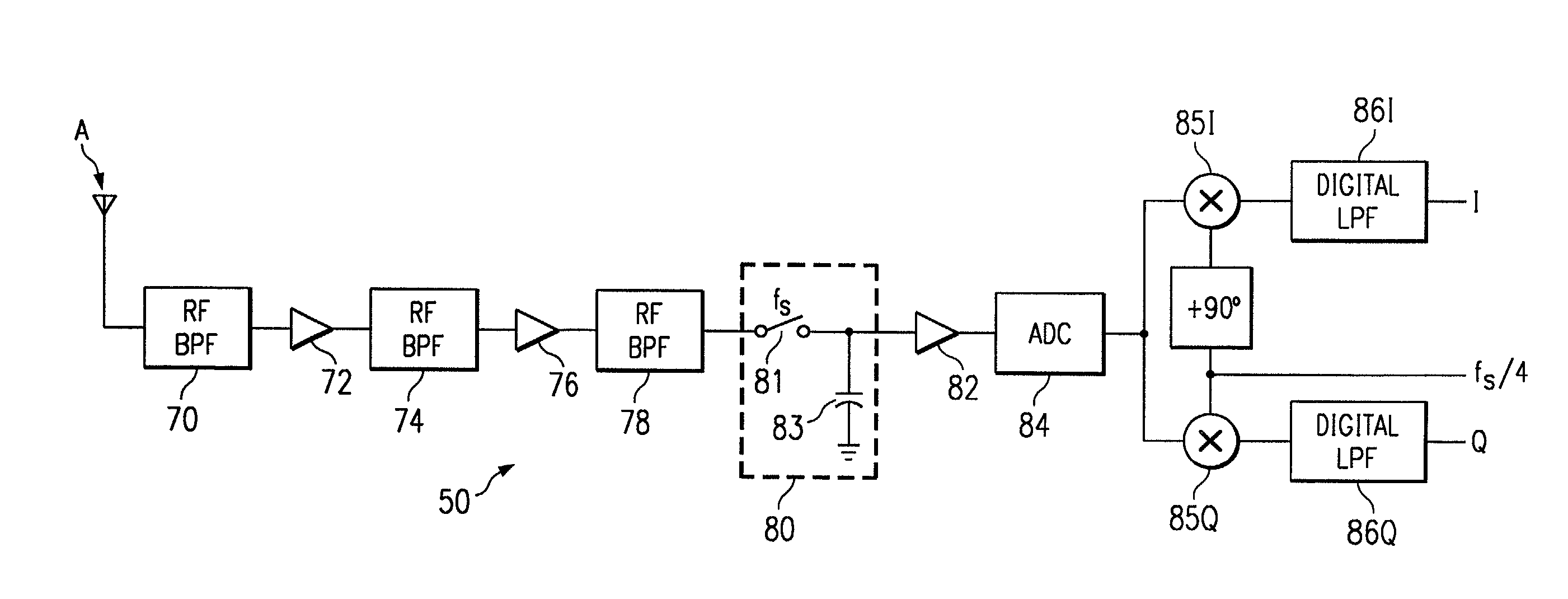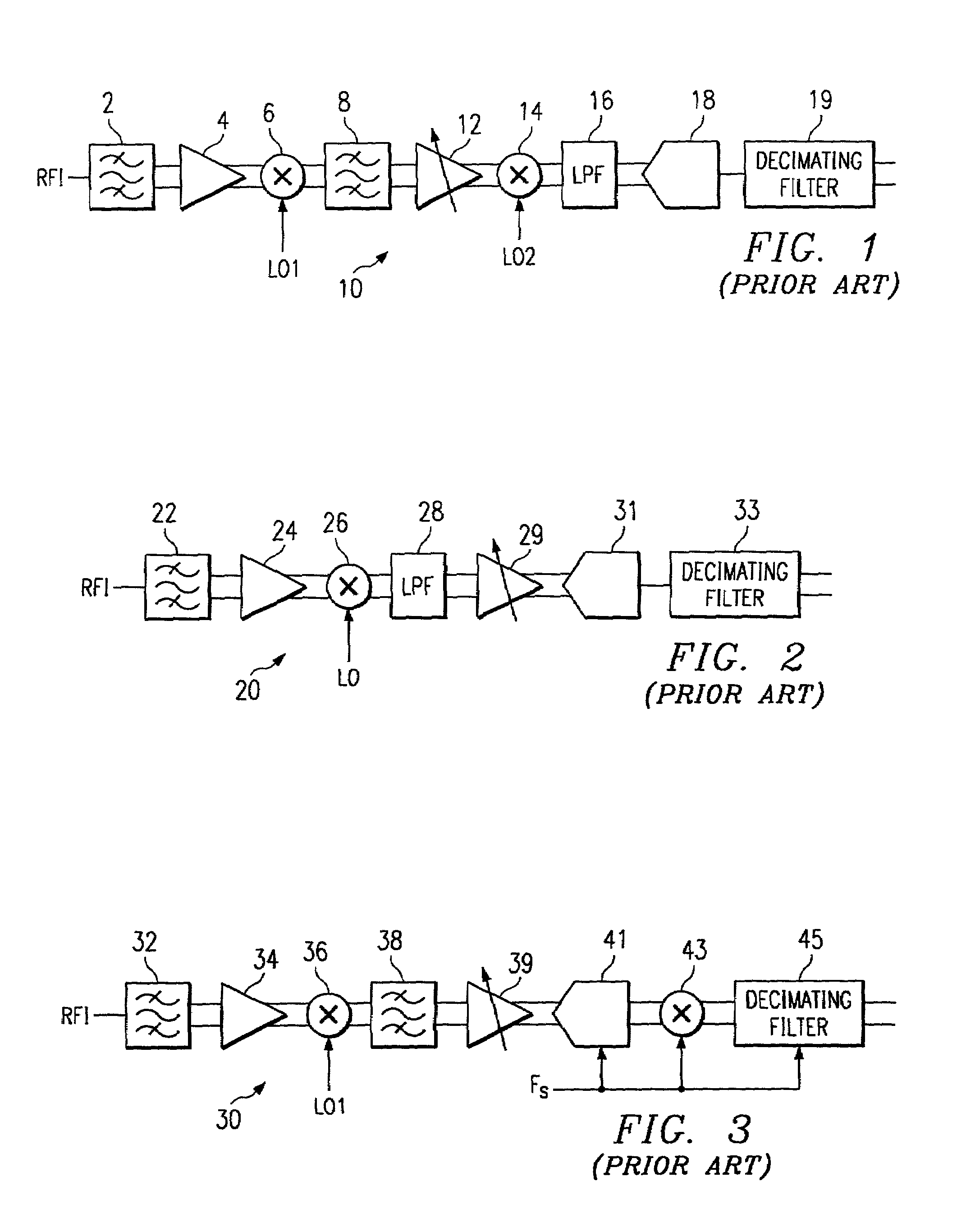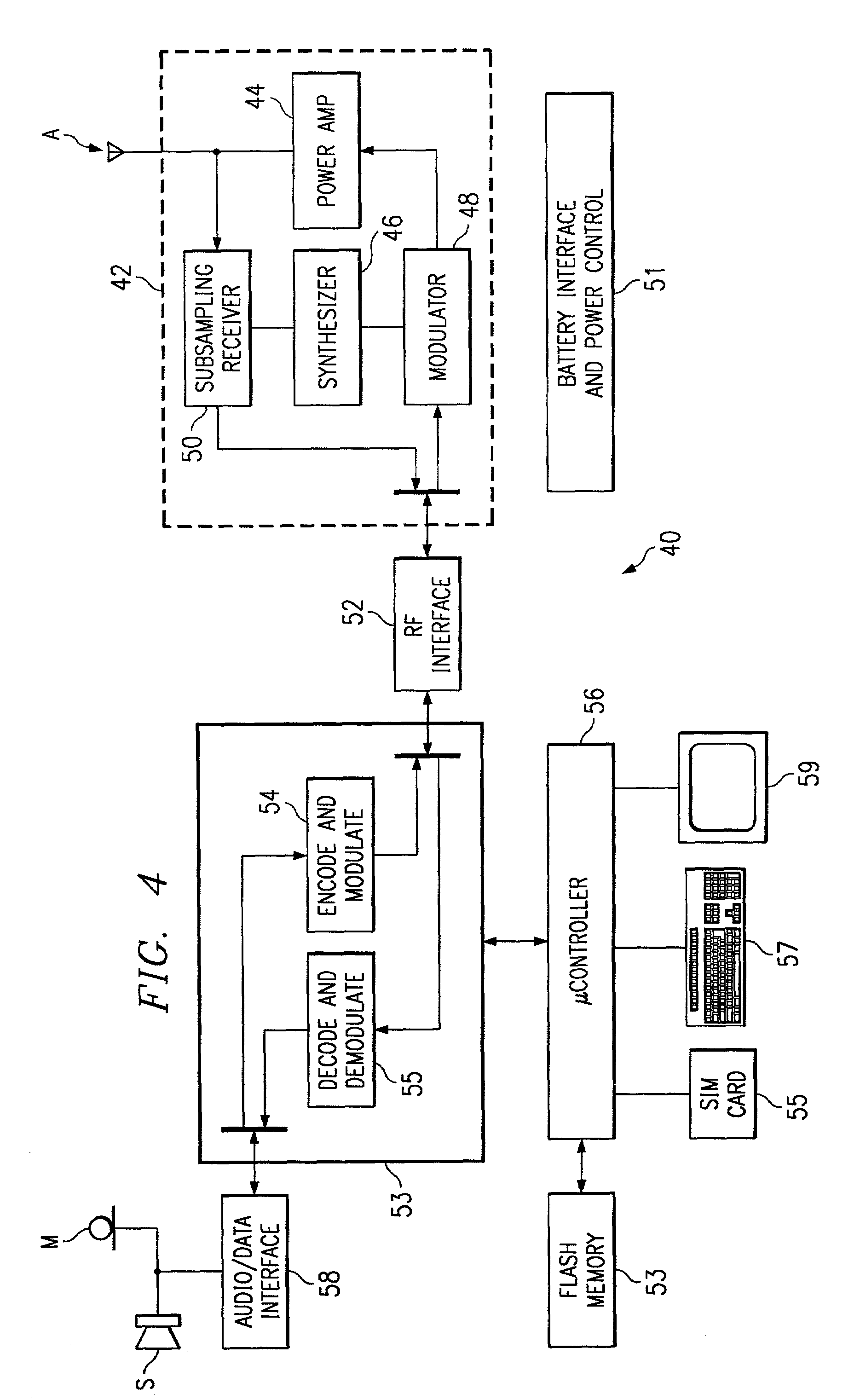Subsampling RF receiver architecture
a receiver and subsampling technology, applied in the field of subsampling rf receiver architecture and receiver circuitry, can solve the problems of increasing wireless traffic, affecting the availability of communications bandwidth, and inability to integrate saw filters with conventional semiconductor integrated circuits, so as to reduce manufacturing costs and power dissipation, and provide high performance.
- Summary
- Abstract
- Description
- Claims
- Application Information
AI Technical Summary
Benefits of technology
Problems solved by technology
Method used
Image
Examples
first embodiment
[0045]Referring now to FIG. 6, the construction and operation of subsampling receiver 50 according to this invention will now be described in detail. As will be apparent from the following description, subsampling receiver 50 is constructed so as to be efficiently buildable into a single integrated circuit, along with other analog functions contained within wireless handset 30, if desired. As shown in FIG. 6, the signal from antenna A is received by subsampling receiver 50. FIG. 5c illustrates the frequency spectrum of this signal, including both the RF input signal RFI, which is centered at a high, RF, frequency, and also broadband noise NRFI. This signal is applied to first RF bandpass filter 70, which filters the received signal to the frequency range around its carrier frequencies. According to this embodiment of the invention, after bandpass filter 70, the filtered signal is applied to low-noise amplifier (LNA) 72, which amplifies the signal by on the order of 20 dB with a nois...
second embodiment
[0055]Referring now to FIG. 7, the construction and operation of subsampling receiver 50′ according to a second preferred embodiment of the invention will now be described in detail. According to this second embodiment of the invention, each of the in-phase and quadrature components I, Q have their own sample-and-hold circuits, and as such avoids the necessity for digital mixers. In addition, as will become apparent from this description, subsampling receiver 50′ is particularly well-suited for use in a multi-mode WCDMA receiver.
[0056]Antenna A is connected to duplexer 88, as shown in FIG. 7; as known in the art, duplexer 88 is a conventional circuit that combines both the transmit and receive signals over antenna A. Duplexer 88 attenuates the received signal from antenna A by on the order of 3 dB, as is typical. In this embodiment of the invention, signals received from antenna A via duplexer 88 are amplified by LNA 90, having a gain of on the order of 20 dB and a noise figure of 2...
PUM
 Login to View More
Login to View More Abstract
Description
Claims
Application Information
 Login to View More
Login to View More - R&D
- Intellectual Property
- Life Sciences
- Materials
- Tech Scout
- Unparalleled Data Quality
- Higher Quality Content
- 60% Fewer Hallucinations
Browse by: Latest US Patents, China's latest patents, Technical Efficacy Thesaurus, Application Domain, Technology Topic, Popular Technical Reports.
© 2025 PatSnap. All rights reserved.Legal|Privacy policy|Modern Slavery Act Transparency Statement|Sitemap|About US| Contact US: help@patsnap.com



